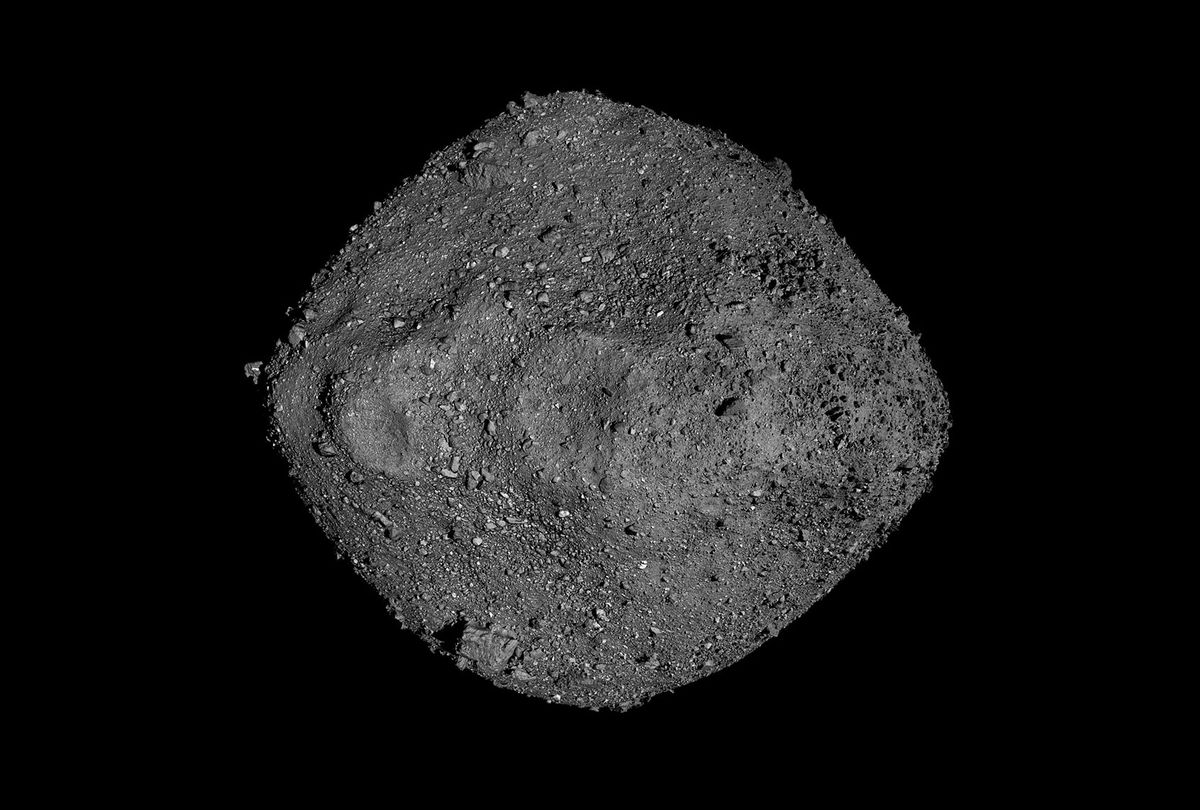When on Tuesday scientists lifted the lid off of OSIRIS-REx — a spacecraft that recently visited Bennu, an asteroid which might collide with Earth in the year 2182 — the researchers found something so overwhelming, they literally "gasped" at the "scientific treasure box" just discovered inside.
The "treasure trove" they found inside could provide scientists with volumes of material.
Those quotes were taken from a post on X (formerly Twitter) by NASA's Astromaterials Research and Exploration Science (ARES) division, which is located at NASA's Johnson Space Center. The scientists were awed by the contents of OSIRIS-REx because the spacecraft had just finished a yearlong journey to a space rock known as Bennu.
The carbon-rich asteroid is on a trajectory that puts it near Earth's orbit, and indeed there is a 0.037 percent chance that it will hit Earth in 2182. (The odds that Bennu hits Earth go up to 1 in 1,750 for 2300.) That provides scientists with good reason to learn more about Bennu's composition, in case it becomes necessary to protect Earth from the Empire State Building-sized chunk of rock. If Bennu collides with Earth, it will release 1,200 megatons of energy, or 24 times as much as the most powerful nuclear weapon built so far.
Yet there is an additional reason for scientists to pay attention to Bennu — namely, that carbon-rich asteroids like Bennu may have played a role in triggering life on this planet.
"We think objects like Bennu may have made Earth habitable," Dante Lauretta, OSIRIS-REx's principal investigator and a professor of planetary science and cosmochemistry at the University of Arizona, told The Wall Street Journal. "They might have delivered the ocean water, the molecules that are in our atmosphere, and maybe even the organic materials that triggered the origin of life on our planet."
This helps explain why the scientists gasped when the lid for OSIRIS-REx was opened. When they did so, the "treasure trove" they found inside could provide scientists with volumes of material in researching crucial questions about the origins of life on Earth. The treasure trove included "dark powder and sand-sized particles on the inside of the lid and base," all of which had previously rested on Bennu's rocky surface. Figuratively, these samples are merely the tip of the iceberg; it will take weeks to carefully disassemble OSIRIS-REx so that scientists can get to the larger chunks of rock taken directly from the asteroid by their spacecraft. That sample will be revealed to the world in a special broadcast on Oct. 11th.
"There is a very high level of focus from the team — the sample will be revealed with an amazing amount of precision to accommodate delicate hardware removal so as not to come into contact with the sample inside," Johnson Space Center officials explained in a statement.
Want more health and science stories in your inbox? Subscribe to Salon's weekly newsletter Lab Notes.
The treasure trove included "dark powder and sand-sized particles on the inside of the lid and base," all of which had previously rested on Bennu's rocky surface.
"Johnson houses the world's largest collection of astromaterials, and curation experts there will perform the intricate disassembly of the Touch and Go Sample Acquisition Mechanism (TAGSAM) to get down to the bulk sample within," the statement also elaborates. "These operations are happening in a new laboratory designed specifically for the OSIRIS-REx mission."
While scientists have not had a chance to study the surface of Bennu with Earth-bound equipment, the OSIRIS-REx journey to Bennu was eventful enough that they know to expect surprises. Although the researchers had believed that Bennu had a smooth surface, they were shocked when upon arriving in 2018 they instead discovered a "bouldery hellscape." As Lauretta later told Space.com, "When we designed the spacecraft, we had a design targeting accuracy [for the landing] of about 50 meters [164 feet]. The thermal properties, also the radar properties [of Bennu], really looked like a smooth surface. So when I first saw that [the surface was completely different], I really thought we might be in trouble there."
We need your help to stay independent
Fortunately help came from Brian May, the Queen guitarist who also has a PhD in astronomy and specializes in stereoscopic imaging, which replicates how human eyes perceive surrounding space in three dimensions. Although OSIRIS-REx did not have a stereo camera, May used images of various spots from Bennu's surface that had been taken at different angles and processed them for 3D viewing. This made it possible for OSIRIS-REx's team to land their vehicle in a crater that was adequately smooth.
"Once you have a stereo image of that particular potential landing site, you can really make that instinctive judgment as to whether things are going to work out," May told Space.com in an earlier interview. "You see that there is this boulder, how much slope there is, how dangerous it is to get on and to get off."
Read more
about astronomy



Shares